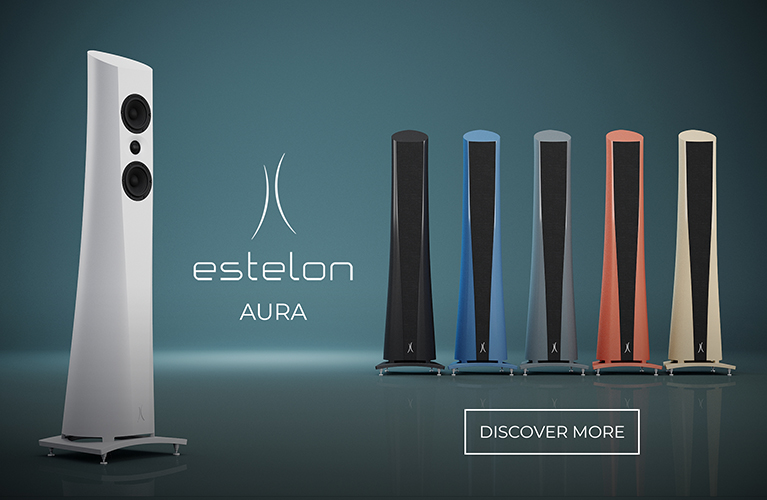In an age where music streaming now accounts for around 65% of total music revenues [source: The global music market was worth $26bn in 2021 - BBC News], the link to the internet has become critically important. Much like the move to separate the input stage and output stage of the integrated amplifier in our parent’s generation, the last decade has seen the emergence of high-quality music streaming devices designed to complement high-end stand-alone DACs. Products like Innuos’ Pulsar, an upper tier music server/player, allow for the optimal retrieval, decoding and signal preservation of today’s high-resolution recorded music.
Out of the Box: An Interstellar Encounter?
For those among us who haven’t heard, Innuos is a name synonymous with high-end music servers since the company’s inception in 2009. The business was founded with the goal of unleashing the full potential of digital music playback and the belief that high-quality music reproduction and ease-of-use are the key parts of the at home music experience.
Pulsar is a name shared with a certain type of neutron star and it’s also Innuos’ latest network music player which sits at the pinnacle of its Pulse range. It is essentially a stripped-down version of the mighty ‘Statement’, a no holds barred, state-of-the-art assault on music storage and streaming. The Pulsar employs much of the same tech, minus the disc ripper and the inbuilt storage and is designed to be used as a standalone component or as an endpoint in a sophisticated high-end multi-zone system.
Innuos has invested heavily in several key areas to ensure the Pulsar is able to deliver a truly stellar performance. The first is the on-board PhoenixUSB Lite Reclocker (which Innuos also sells as a stand-alone component to upgrade the performance of its Zen range of components). Innuos has found that reclocking has one of the most significant effects on the sound of digital files as they are sent to the DAC. For this reason, Innuos has avoided the traditional S/PDIF and AES/EBU outputs and focused entirely on USB.
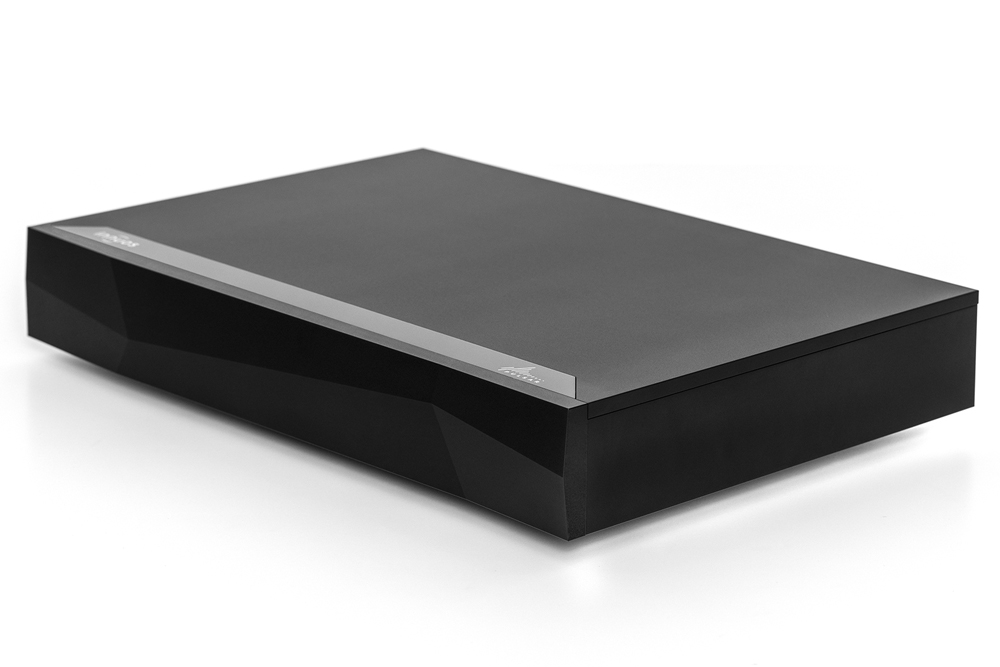
The second is ARC6 active rectification via 130,000uF of Mundorf capacitors. Capacitors can add significant component level cost but given the wide range in tolerance of their performance, premium capacitors allow not just better, but far more consistency of performance in the end product.
Third is a 300VA audiophile grade toroidal transformer designed with optimal vibration damping and magnetic screening. There are three independent power rails feeding the main board, the SSD (solid state drive) and the reclocker which is also fed by a custom ‘CX Regulator’.
Lastly, the SSD hosting the Innuos operating system employs ‘Single-Level Cell SSD’ technology which Innuos says offers better durability and lower noise than the more common TLC (Triple-Level Cell) SSD technology.
The tech employed in the Pulsar is the result of years of research into the benefits of separating the task of retrieving music files from the internet and/or local storage and minimising any sonic decay inherent in passing the digital media to the DAC without compromising the ability of the DAC to reconstruct the signal.
The Pulsar arrived on loan for evaluation after several weeks of running-in thanks to the super decent chaps at Perth’s Frank Prowse Hi-Fi. Double boxed and cradled with high quality high durability expanded polyethylene packaging, Innuos has provided a reassuring sense of product protection.
Rather than presenting itself as another rectangular shaped obelisk, the Pulsar was shapely, and uncluttered – its fascia, like a polished gemstone, could be mistaken for a sophisticated interstellar traveller, one ready to adorn my audio sanctuary… However, unlike Oumuamua, the Pulsar is a sleek, compact object, with a heft that makes it feel almost indestructible. Its 420mm x 290mm x 76mm footprint is whispered efficiency.
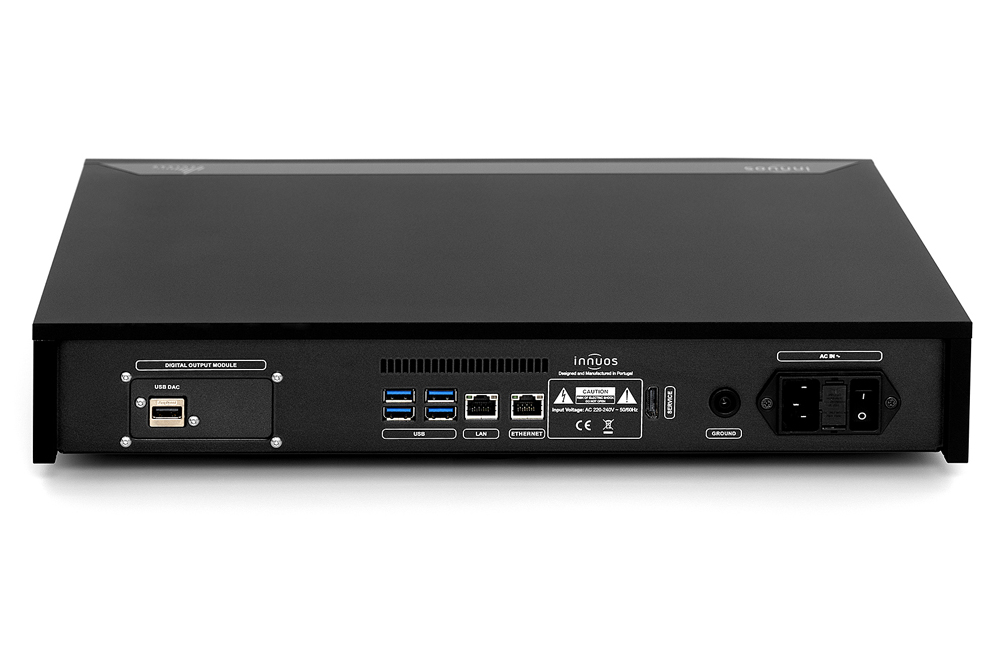
Isolation is provided via three ‘rubberised’ feet which grip the surface Pulsar is placed on, meaning that it must be lowered and not slid into position. Easy for me in my cabinet but perhaps more difficult for some others. Innuos says that the Pulsar is made with a full bead-blasted and anodised high-grade aluminium chassis. I say that once in position, it looked downright gorgeous on my cabinet.
There are no controls to mar the fascia, there is a soft illumination which emanates from underneath letting you know that it is powered. Connectivity on the rear panel is well laid out and easily accessible. Connections can pretty much be made one handed, and possibly even blindfolded, which will be a boon for those with limited space at the back of their cabinet and/or those with fading eyesight or worse…
There are two ethernet ports one allowing the Pulsar to connect to the internet and the other to allow the Pulsar to act as a relay device to another system elsewhere in the house. There are also four USB inputs allowing connection to SSD memory, or traditional USB hard drives, which means that a NAS is not mandatory but is also catered for. As mentioned earlier, the recommended connectivity to the DAC is via USB which won’t represent a problem for most modern DACs but there’s also a LAN option. Pulsar’s ‘Endpoint Mode’ connects to Innuos Music Servers, Logitech Media Server based products and HQPlayer Server. Pulsar is also UPnP and DNLA capable while also being compatible with Tidal, Qobuz and more and supporting most file formats. Further, we're told that "Airplay certification is in the process but is coming in the very near future".
Specifications are impressive. The Pulsar’s Phoenix reclocker provides up to 32-bit/768 KHz, up to DSD256 via DoP, up to DSD512 via Native DSD. It also supports MQA Core Software Decoding, which means you can playback MQA audio files and streams up to 24-bit/96 kHz for non-MQA DACs and up to 24-bit/384 kHz for MQA Renderer/Decoder DACs. The Pulsar can also passthrough MQA files to MQA Full Decoder DACs.
Navigating the Sonic Cosmos: Interface and Controls
Control, the Pulsar assures, rests at your fingertips. The Innuos Sense app allows you to configure and operate the Pulsar, and navigating the musical cosmos becomes a seamless dance.
The Sense app is like a star map, guiding your musical exploration with grace, however, it does lack the rich metadata – the functionality to acquire information about the artist, album, reviews, ratings, and lyrics etc. to the level that Roon provides. However, it does provide high quality artist images and then goes a step further by allowing you to edit the metadata of your library on the fly. Very cool.
Sense will link you to the audiophile streaming services like Qobuz and Tidal, but it wouldn’t let me stream from Apple Music via my iPhone which I sometimes like to do using my trusty Lumin T1. I find being able to do this allows my tech-challenged girlfriend and guests to quickly get their tunes on the big rig. Sense also offers up Radio Paradise which I am now exploring, along with the usual Internet Radio stations.
Stellar Harmonies: Sonic Performance
With the Pulsar connected to my Perreaux e250i Anniversary Edition’s Eloquence DAC using a QED Performance Graphite USB cable and my Lumin T1 connected to the DAC via its S/PDIF coaxial BNC input using an Atlas Compass 75-ohm digital cable I was set to go. According to Perreaux, the Eloquence DAC favours the BNC input over USB so I suspected the comparison would be an interesting one.
Setting musical coordinates to “Kiko and the Lavender Moon” from Los Lobos’ Kiko album, I was immediately struck by the precision timing and rhythm. It was hard to listen to this track without tapping my feet. I gave in and afforded myself the luxury of becoming immersed in the music, and enjoying the ride, rather than trying to focus on what I thought the system and Pulsar were doing right and maybe not so right. Nonetheless, impressions were formed. The accordion while rhythmically precise sounded a little softer than I was expecting but this was the same on the T1 so not attributed to the front end. Through the T1, I felt I was losing a little of the overall excitement within the piece although initial impressions were of a more open and airy sound. I later realised that rather than openness and air the Pulsar was delivering a more highly focused presentation – one which was ultimately more satisfying and seemingly true to life.
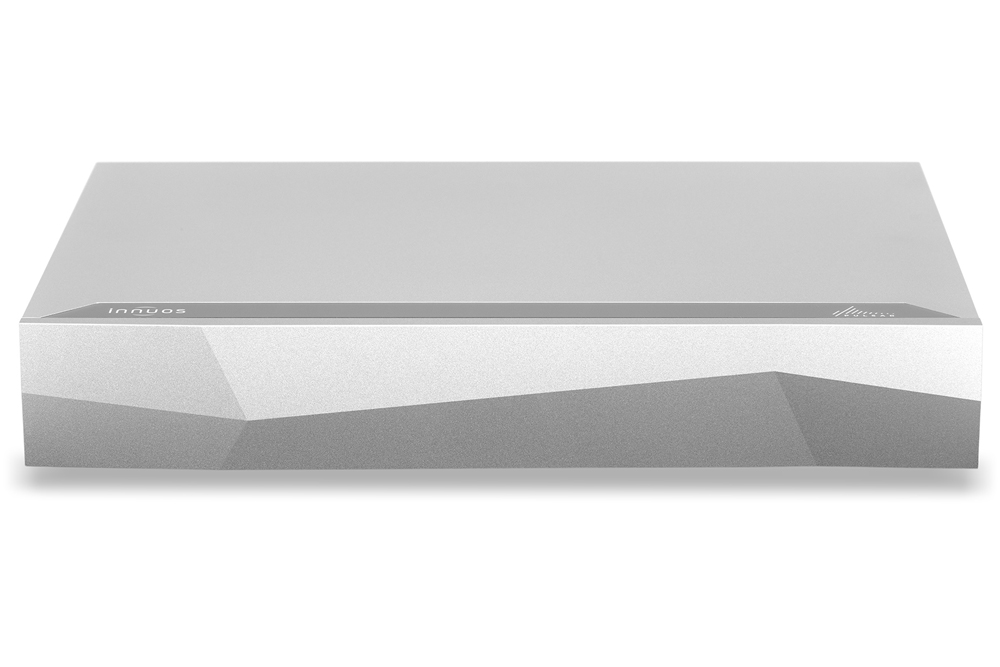
The Pulsar is hugely articulate, proving that what is lost at the source can never be recovered. I felt that the level of detail retrieval was superb by comparison to my T1, which I hold in high regard. This superior articulation was evident most notably in the bass. Kick drums sounded real and had power that could be felt, the string bass also, was full bodied and had a lovely resonance. The Pulsar was able to deliver more variation in pressure and more dynamics than what I was used to in my system.
My friend James (not an interstellar visitor) visiting Oz from the medieval village of Diss, stopped by for a visit and suggested we amp things up a little with some electronic music. He chose “Saudade” by Abel Ray from the 2021 Labyrinth album. Again, the Pulsar quickly seized control – like someone snapping their fingers in front you to focus – and my feet were tapping again. The powerful low-end synth bass on this track was a delight. Dark and Moody, the Pulsar created and sustained the atmosphere for the full seven minutes.
We tried a few other old classics like Paul Simon’s “50 Ways to Leave Your Lover” from his Still Crazy After All These Years album, and Rickie Lee Jones’ “Easy Money” from her self-titled album. We all know what a difference a DAC can make, well, the Pulsar was certainly convincing in demonstrating exactly what a difference the streaming ‘link in the chain’ can make within the overall system architecture. Individual instruments and vocals sounded lifelike and firmly in the Goldilocks zone being neither too big, nor too small. Drums on James Taylor’s “Fire and Rain” from his Sweet Baby James album were sublime.
The primary job of a source component is ‘Do No Harm’ and in this task the Pulsar excels. I found it to be incredibly articulate, bringing forth a renewed sense of clarity on pretty much all the music I listened to. It also brings a sense of being in control, yet not controlling. Live performances sounded live and dynamic. If you’re a fan of live Jazz or Classical music the Pulsar will make you feel as though you are directly connected to the performers. I was in heaven listening to Chopin’s Nocturne No. 3 in B, by Claudio Arrau. Every nuance was captured, you could easily hear the room ambience and the pedals were so clear it was like you could almost reach out and touch the piano. I found myself wondering how much better the Innuos Statement could be…
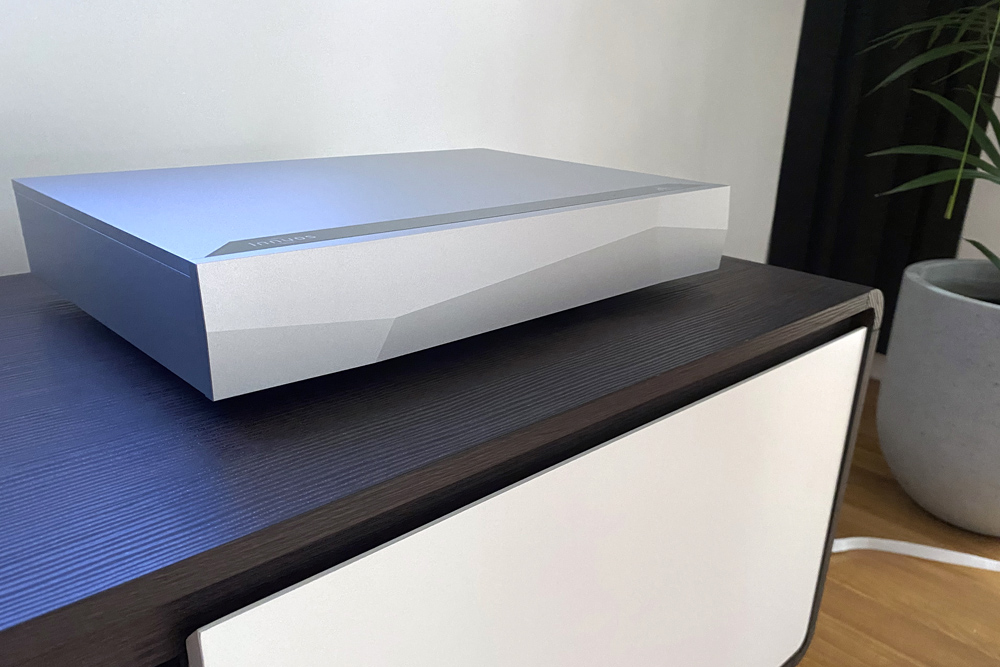
Buddy Guy’s ‘Anna Lee’ from his album Blues Singer is a large open sounding recording and through the Pulsar I noticed again the additional level of focus that it provides. Again, the soundstage didn’t sound quite as expansive as via the T1, the focus kind of reigns things in a little. Buddy’s vocals are palpable, the guitar picking reproduced with outstanding effect – a definite step up from what I’m used to.
Were there any negatives? Well, the Pulsar occasionally sounded a little lean compared to my T1. It’s not a lush grandiose sound, it’s a sound that I felt errs on the side of accuracy rather than warmth, and as a source component, I think this is the best way to start out. Any preferred voicing can happen further down the chain.
Conclusion
The Pulsar brings laser-like focus, superb rhythm and timing and a sense of control. Couple this to one of the most engaging user interfaces around and a simply gorgeous physical presence, there’s not a lot not to like.
The more music you listen to though the Pulsar, the more likely it is that you’ll find yourself caught in the Pulsar’s gravitational pull of promises and possibilities. In the cosmos of music streaming, the Innuos Pulsar emerges like a celestial beacon, beckoning music lovers and audiophiles to embark on a sonic odyssey.
… Barry Jones
www.soundstageaustralia.com
Associated Equipment:
- Speakers — Sonus faber Amati Homage
- Amplifier — Perreaux e250i 40th Anniversary Edition integrated amplifier with Eloquence DAC
- Sources — Digital: Lumin T1, Oppo BDP-105D Analogue: Rega RP6 turntable, Rega Exact-2 cartridge, Rega Aria phono stage, Rega Couple interconnects
- Processor — DEQX HDP-5
- DAC/Headphone Amplifier — Chord Mojo DAC
- Headphones — AudioQuest Nighthawk
- Cables — Nordost White Lightning, Kimber Cable Timbre balanced and Van den Hul D-300III unbalanced interconnects, Atlas Compass Digital Coaxial Audio Cable, QED Performance Graphite USB
- Miscellaneous — IsoTek Sirius Power Conditioner, 8 x Auralex SA8600 bass traps in front wall corners, 12 x Sound Acoustics MP700-40 ceiling acoustic panels
Innuos Pulsar Network Music Player
Price: AU$11,499
Australian Warranty: Two Years
Australian Distributor: Maxmedia
+61 418 385 982
www.maxmedia.com.au
Innuos
Lote 1D
Zona Industrial Vale da Venda
8005-412 Faro
Portugal
+351 308 800 826
www.innuos.com









